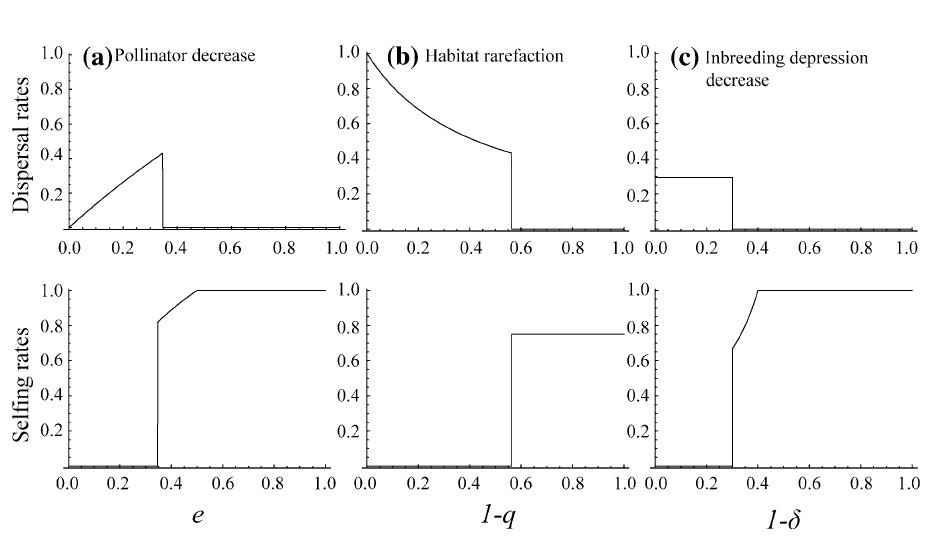The question of the stability of distribution ranges of species is fundamental in evolutionary ecology. There are two theoretical frameworks, local adaptation and metapopulation dynamics, to solve this question. For example, Kirkpatrick and Barton (1997) provided one of the first evolutionary models for a species on a gradient of environmental conditions. The metapopulation framework proposed by Holt et al. (2005) provides a relevant ecological scenario in which the evolution of traits across ranges can be analyzed.
Dr SUN Shan, from YANG Yongping’s group in Kunming Institute of Botany, and Dr Pierre-Olivier Cheptou, from Centre d’Ecologie Fonctionnelle et Evolutive, use a recent evolutionary model by Cheptou and Massol (2009) that analyses the joint evolution of dispersal and the mating system in a metapopulation. In this model, when local pollen limitation varies stochastically over time, the results of invasion analysis showed that a strong association of traits emerges and that only two evolutionary associations are selected: 1) dispersal associated with full outcrossing (‘‘dispersal/outcrossing’’ syndrome) and 2) absence of dispersal associated with partial or full selfing (‘‘no dispersal/selfing’’ syndrome). Based on these results, it is proposed that when distribution ranges may results in gradients in pollen limitation for plant, habitat availability or inbreeding depression, such gradients result in a change in both traits and create stable limit ranges for plant distribution. Some empirical results favor that there are the gradients in pollen limitation, habitat availability or inbreeding depression along distribution ranges.
This work is published by Evolutionary Ecology (http://www.springerlink.com/content/4x52m30951342173), and supported by the National Science Foundation of China (31100277).

Evolutionarily stable dispersal rates (upper) and selfing rates (lower) are presented as functions of parameters under three scenarios: a, gradient in pollen limitation (e); b, gradient in habitat availability (cost of dispersal, 1 - q); and c, gradient in inbreeding depression (1 – δ). (Image by KIB)




